Imagine stepping just outside your door or reaching over to your balcony and plucking fresh mint for your tea, crisp lettuce for your salad, or ripe tomatoes for your pasta. A kitchen garden makes this possible — and you don’t need a huge backyard to enjoy it. Whether you have a small patio, balcony, or sunny windowsill, you can start growing your own fresh herbs, vegetables, and fruits at home.
In this complete guide, we’ll show you how to start a kitchen garden from scratch, even if you’re a total beginner, with practical steps, tips, and ideas for success.
What is a Kitchen Garden?
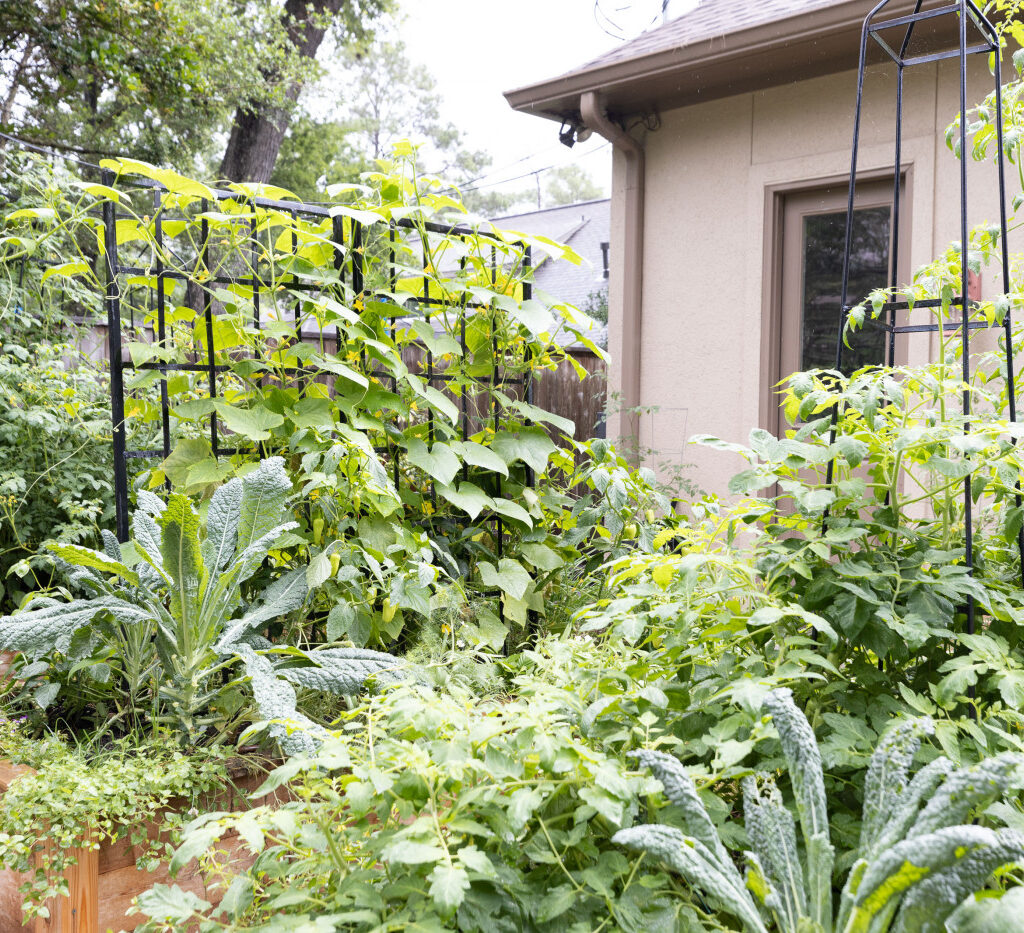
A kitchen garden (or potager) is a small, homegrown garden designed to produce fresh ingredients for daily cooking. Traditionally grown close to the kitchen or home, it includes herbs, vegetables, fruits, and sometimes edible flowers.
Why have one?
- Fresh, pesticide-free produce
- Better flavor and nutrition
- Cost-effective grocery savings
- Therapeutic hobby for relaxation
- Eco-friendly, reducing packaging waste
Planning Your Kitchen Garden
Before you start planting, think about:
How Much Space You Have
You don’t need a big yard. You can grow:
- In pots on a windowsill
- In hanging baskets
- On your balcony railing
- In raised beds
- Along your patio wall
Tip: Vertical gardening and hanging planters are excellent space savers for small areas.
How Much Sunlight is Available
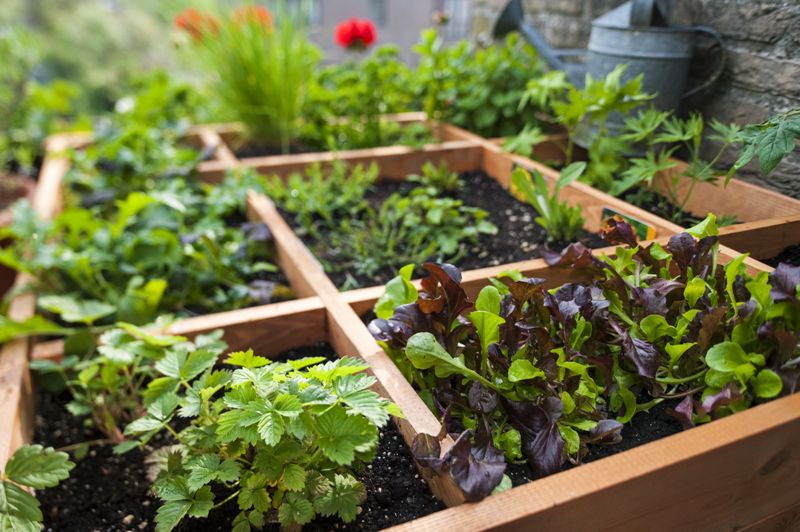
Most edible plants need 4–6 hours of direct sunlight daily.
Observe your space to identify the sunniest spots.
- South-facing windows or balconies are best.
- Indoors, consider LED grow lights for extra brightness.
What You Want to Grow
Choose plants based on:
- What your family enjoys eating.
- The space and light you have.
- Ease of growing for beginners.
Start with simple, fast-growing options like herbs, leafy greens, tomatoes, and chillies.
Best Plants for a Kitchen Garden
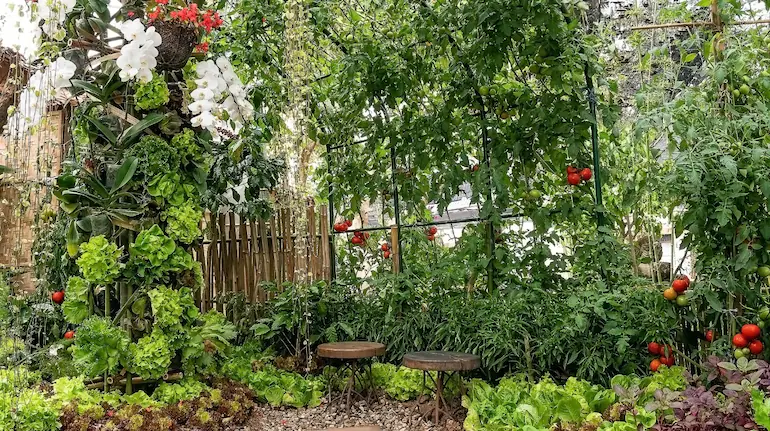
Here are easy, beginner-friendly crops to start with:
Herbs:
- Basil
- Mint
- Coriander (Cilantro)
- Parsley
- Thyme
- Oregano
Why start with herbs? They grow quickly, take little space, and you’ll use them often in cooking.
Leafy Greens:
- Spinach
- Lettuce
- Kale
- Fenugreek (Methi)
- Mustard greens
Tip: Cut-and-come-again varieties allow you to harvest multiple times.
Vegetables:
- Tomatoes (especially cherry or patio types)
- Chillies
- Radishes
- Carrots (small varieties)
- Beans
Edible Flowers:
- Nasturtium
- Calendula
- Marigolds (also repel pests)
Essentials to Start a Kitchen Garden
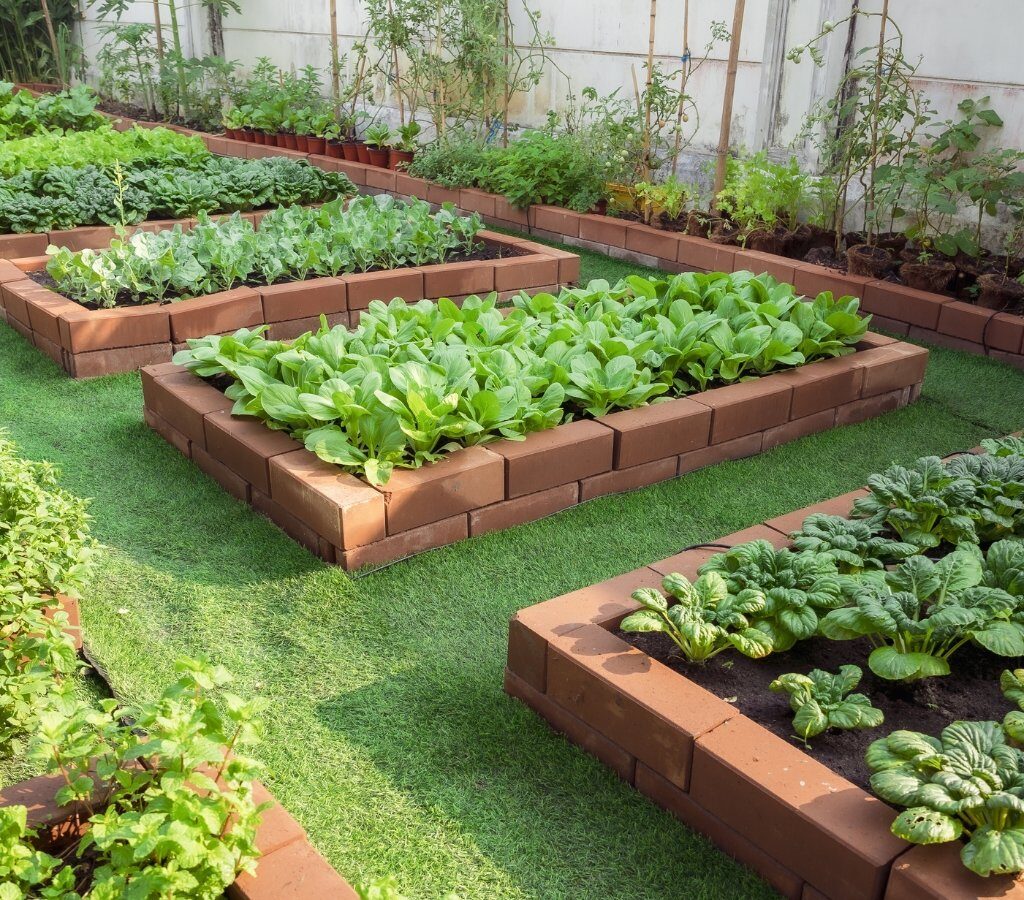
Here’s what you’ll need:
- Containers or pots with drainage holes
- Good-quality potting mix (never plain garden soil in pots)
- Seeds or seedlings
- Watering can or spray bottle
- Liquid fertilizer or compost
- Trowel and gloves (optional but helpful)
Tip: You can also reuse old cans, buckets, and baskets as planters.
Step-by-Step: How to Start a Kitchen Garden
Let’s break down the process for easy understanding.
Step 1: Choose a Location
Find a spot with maximum sunlight — a windowsill, balcony, patio, or courtyard.
If you have no outdoor space, use grow lights indoors.
Step 2: Pick Your Containers
Size depends on the plant:
- Herbs: 6–8 inch pots
- Leafy greens: 8–10 inch pots
- Tomatoes/Chillies: 10–12 inch deep containers
- Hanging baskets for trailing plants (like mint)
Ensure all pots have drainage holes.
Step 3: Prepare the Soil
Use a loose, well-draining potting mix enriched with compost.
DIY potting mix recipe:
- 2 parts organic potting soil
- 1 part compost
- 1 part coco peat or perlite (for aeration)
Step 4: Sow Seeds or Plant Seedlings
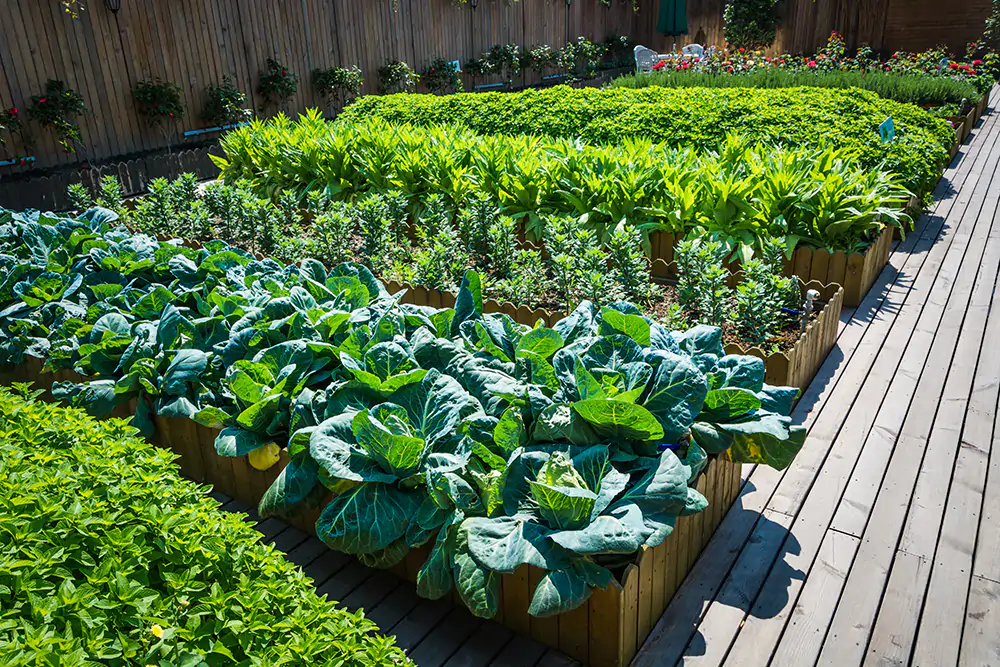
Sowing seeds:
- Follow instructions on the seed packet.
- Sow 2–3 seeds in each pot, cover lightly with soil, and water gently.
Using seedlings:
- Carefully transplant into prepared containers.
- Firm soil around the base and water.
Step 5: Water Wisely
Most plants prefer consistently moist, not soggy soil.
Tips:
- Check soil moisture with your finger before watering.
- Water early morning or late afternoon.
- Mist delicate seedlings and herbs.
Step 6: Fertilize Naturally
Use organic compost, vermicompost, or liquid seaweed fertilizers every 2–4 weeks.
Avoid chemical fertilizers in kitchen gardens meant for consumption.
Step 7: Prune and Harvest Regularly
Pinch off dead leaves and prune herbs to encourage bushy growth.
Harvest tips:
- Pick herbs early morning for the best flavor.
- Harvest leafy greens by cutting outer leaves.
- Pick tomatoes and chillies when ripe.
Common Kitchen Garden Problems and Solutions
| Problem | Cause | Solution |
|---|---|---|
| Yellowing leaves | Overwatering | Water less often, improve drainage |
| Leggy, weak stems | Not enough sunlight | Move to a sunnier spot or add grow lights |
| Pests (aphids, mites) | Humidity, poor airflow | Use neem oil spray, handpick pests |
| Mold on soil surface | Overwatering or poor drainage | Improve airflow, reduce watering |
| No fruit/flowers forming | Too much nitrogen fertilizer | Switch to a balanced or bloom-boosting fertilizer |
Bonus Kitchen Garden Ideas
- Create a vertical herb garden using wall-mounted planters.
- Use recycled containers — old cans, milk bottles, or tea tins.
- Regrow veggies from kitchen scraps — green onions, coriander, lettuce bases.
- Add edible flowers for color and pollinator appeal.
How to Maintain Your Kitchen Garden
- Water consistently — don’t let soil dry out completely.
- Fertilize every few weeks with organic options.
- Prune herbs and leafy greens regularly.
- Move plants around as seasons or light conditions change.
- Watch for pests and treat them early.
Remember: The more you harvest, the more your kitchen garden will produce!
Final Thoughts
A kitchen garden is one of the simplest, most satisfying projects you can start at home. Whether you have a backyard, balcony, or just a sunny windowsill, growing your own herbs and vegetables is easy, affordable, and fun.
It’s not just about fresh food — it’s about reconnecting with nature, teaching kids where food comes from, and adding a green, living space to your home.
So grab a few pots, some seeds, and get planting. In no time, you’ll be harvesting fresh basil for your pasta, snipping mint for your lemonade, and enjoying the unbeatable taste of homegrown produce.
Happy gardening!
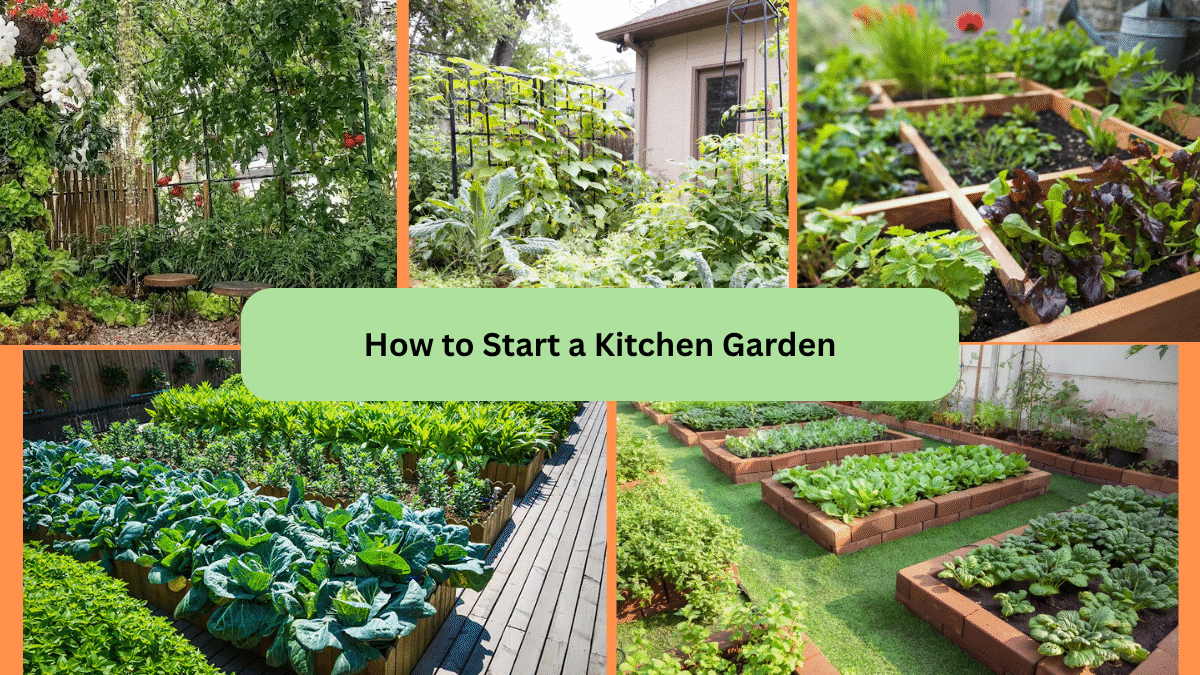


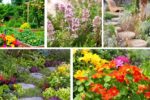
Leave A Comment